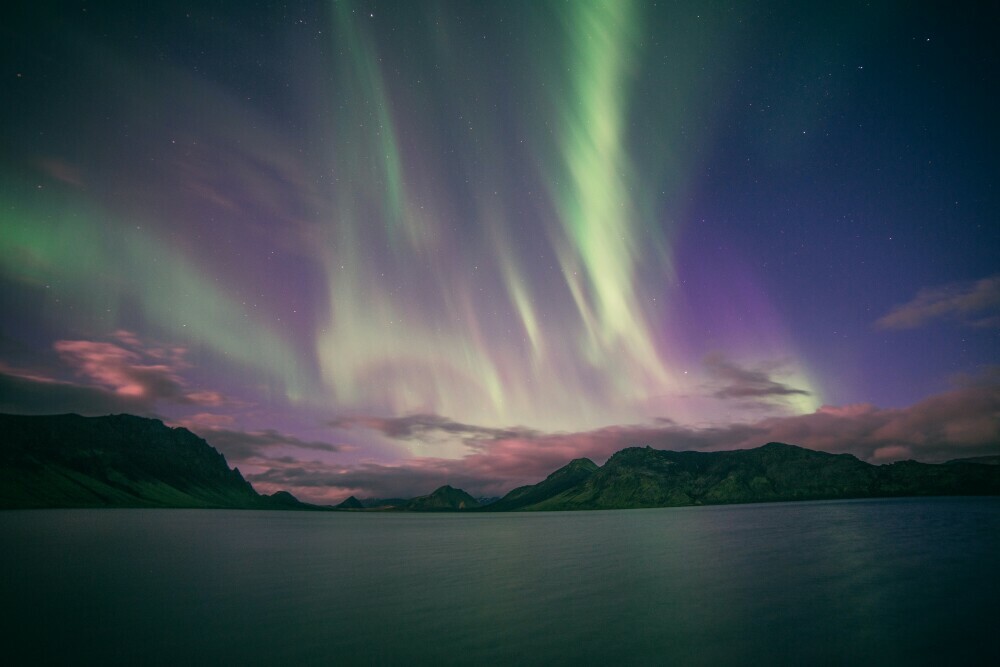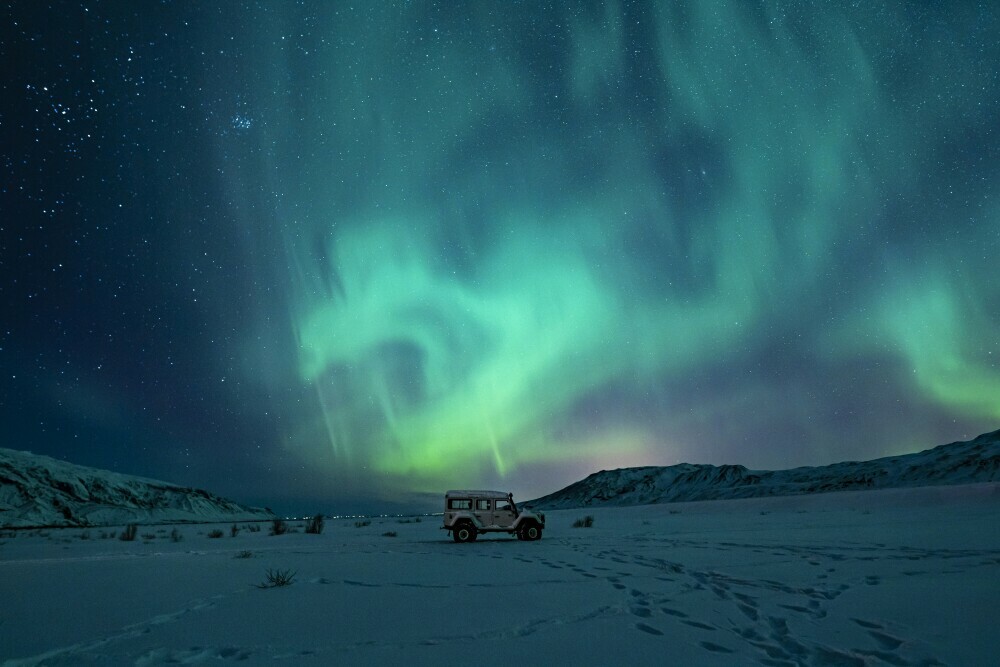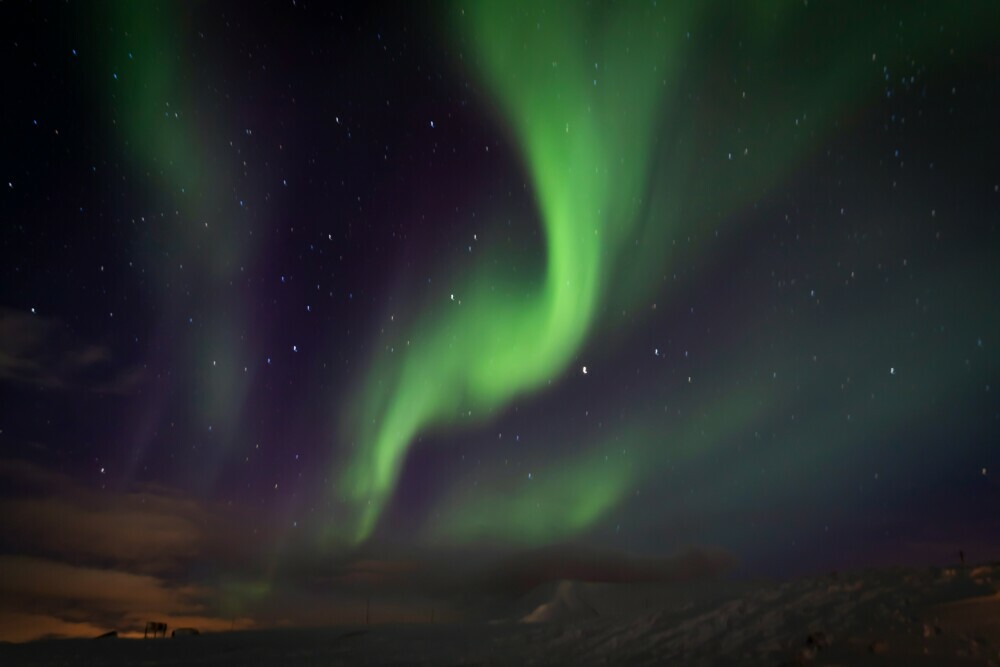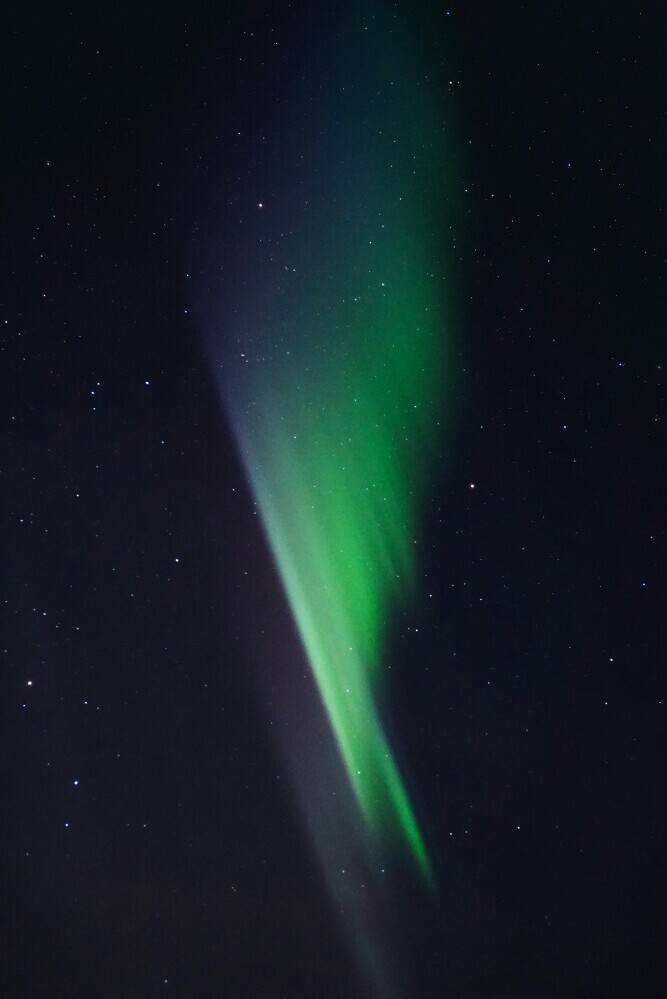 Jonatan Pie. (2017) The Northern Lights Iceland [Photograph]. Unsplash
Jonatan Pie. (2017) The Northern Lights Iceland [Photograph]. Unsplash
The Northern Lights, or Aurora Borealis, present a mesmerizing spectacle many photographers dream of capturing. This natural display of vibrant colors streaking across the night sky results from charged particles from the sun colliding with the Earth’s atmosphere, a remarkable process.
Yet, photographing the Northern Lights comes with its challenges. Fusing intense colors and movement against a dark backdrop tests the limits of camera settings and photographer skill. Achieving crisp, vibrant, and well-balanced Aurora photographs is often a badge of honor for those versed in night sky photography.
Correct exposure is pivotal in the realm of low-light photography techniques. Exposure determines the final image’s brightness and contrast, critical elements when photographing a phenomenon as variable as the Aurora Borealis. Too much exposure causes the lights to bleed out, losing definition; too little, and the grandeur fades into the night.
Multiple exposure blending emerges as a practical solution to these difficulties. It is a balanced exposure technique that combines the best elements of separate shots into one, maintaining optimal light and detail across the composition. Through this guide, I’m set to help you navigate the nuances of Northern Lights photography, employing exposure blending to achieve stunning, balanced Aurora borealis shots.
Mastering Night Sky Exposure: Techniques for Balanced Aurora Shots
 Jonatan Pie. (2020) The Northern Lights [Photograph]. Unsplash
Jonatan Pie. (2020) The Northern Lights [Photograph]. Unsplash
Achieving a perfectly balanced exposure in Northern Lights photography can often be the difference between a good image and a great one. Grasping the how and why behind exposure settings is fundamental. Put your camera’s ISO, aperture, and shutter speed in tandem to control the light reaching the sensor, which is particularly crucial when photographing the Northern Lights.
Selecting the correct ISO is a balancing act. A high ISO allows your camera to capture more light, which is essential in low-light conditions, yet this can introduce noise and degrade image quality. Finding a happy medium is critical. Meanwhile, the aperture impacts the depth of field and the amount of light entering the lens. For Northern Lights photography, a wide aperture, such as f/2.8, is often preferred to allow maximum light.
Then, shutter speed determines how long the camera’s sensor is exposed to light. It needs to be long enough to capture the light show but not so long that it blurs the movement of the Northern Lights. A rule of thumb might be starting at 5 seconds and adjusting based on the intensity of the auroras.
For those eager to dive deeper, an exposure blending tutorial can elevate your photos. This process involves taking multiple shots with varying exposures and combining them to achieve detail across the extremes of light and dark in one harmonious image. The idea is to take one exposure for the highlights, usually the aurora itself, and another for the shadows, often the landscape below.
The Art of Blending: A Multiple Exposure Blending Guide
 Hyunwon Jang. (2019) The Northern Lights Norway [Photograph]. Unsplash
Hyunwon Jang. (2019) The Northern Lights Norway [Photograph]. Unsplash
The most effective way to capture the dynamic intensity of the Northern Lights is to master the art of exposure blending. Ask any seasoned photographer; combining several images with varying exposures can create one well-balanced shot that showcases every detail of the night sky. Now, I’ll lead you through the process – it’s simpler than you might imagine.
Begin with capturing multiple exposures of the Northern Lights. The goal is to take a series of photographs at different exposure settings. You’ll want to include shots that expose the highlights, the mid-tones, and the shadows separately. Keep your camera on a tripod to ensure each image lines up perfectly for later blending.
Next, select the right images for blending. Look for exposures that complement each other—one that captures the lights brilliantly and illuminates the landscape below and perhaps another that brings out the stars in the backdrop. It’s like creating a harmony of visuals where each element sings at the correct pitch.
Blending is accomplished using photo editing software. Brands like Adobe Photoshop have specific tools for this task. There’s a learning curve, but blending exposures is a breeze once you get the hang of it. Look for areas where the different exposures meet, and make sure the transitions are smooth and natural.
Remember, the trick is to preserve the brilliance and color of the aurora borealis shots. Exposure blending lets you bring out its neon dance across the sky without losing the fine details of the darker landscape. It may take a bit of trial and error, but achieving that balance will turn a good photograph into a breathtaking one.
Honing Your Nighttime Photography Skills: Advanced Aurora Photography Tips
 Jack Young. (2019) The Northern Lights Norway [Photograph]. Unsplash
Jack Young. (2019) The Northern Lights Norway [Photograph]. Unsplash
Once you’ve become comfortable blending multiple exposures for Northern Lights shoots, further refining your skills can lead to more impressive results. Advanced techniques in nighttime photography, when coupled with astute post-processing methods, can transform your photographs from good to breathtaking.
Learning to control noise, increase clarity, and tweak vibrancy in post-processing can make your images stand out. It’s crucial to edit with a light touch to avoid over-processing, which can detract from the natural magnificence of the auroras.
Another tool in your arsenal should be the ability to predict weather and geomagnetic activity. Knowing when and where to capture the strongest auroras can give you a sizeable advantage. Automated alerts and forecasts dedicated to Aurora activities can guide your schedule.
Avoiding typical mistakes, such as incorrect white balance or a shaky camera setup, can vastly improve your nighttime shots. Remember, stability and correct color representation are crucial to capturing the true essence of the Northern Lights.
Feel empowered to share your work, seek feedback, and continually learn from your experiences. Each photograph teaches a lesson, and by building a collection of Aurora shots, you’re crafting a portfolio and a visual journal of celestial performances.
By implementing these advanced tips and refining your techniques over time, you’re mastering the art of Aurora borealis photography and capturing moments of cosmic beauty that few can witness. Keep pushing the boundaries of your craft, and your night sky narratives will surely mesmerize all who see them.
Disclaimer: The Northern Lights is a natural phenomenon, and sightings cannot be guaranteed.
This article directly provides general research and book tours with reputable operators for the most up-to-date information and the best possible experience.
For additional blog posts, please visit:
https://northernlightsshuttertech.com/
(This post may contain affiliate links. If you make a purchase, I may receive a small commission at no cost. Thank you!)
